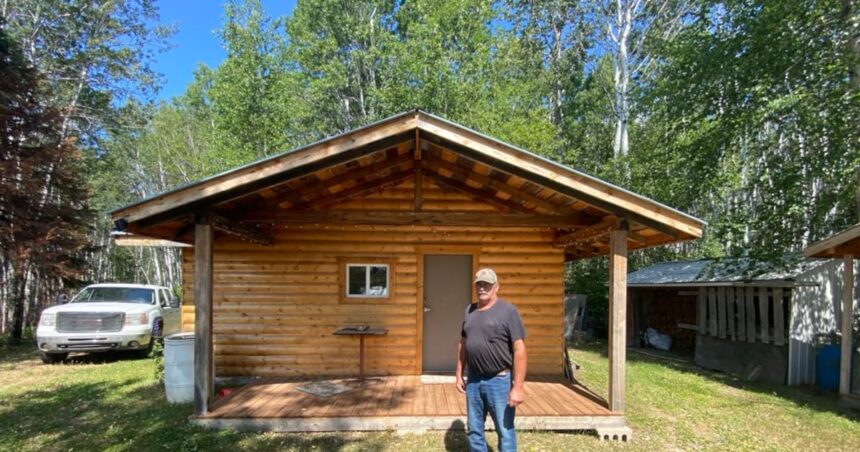As flames consume northern Saskatchewan’s forests this summer, the province’s Indigenous trappers face more than immediate danger. The blazes threaten to fundamentally reshape an industry deeply woven into both cultural heritage and economic survival for many northern communities.
“These aren’t just fires burning trees. They’re burning traplines that families have managed for generations,” explains Harold Petit, president of the Northern Saskatchewan Trappers Association. During our conversation at his Prince Albert office, he points to a wall map dotted with colored pins showing active wildfire zones. “Some trappers have lost everything—cabins, equipment, and the animal habitats they depend on.”
The numbers tell a sobering story. Saskatchewan’s wildfire management branch reports over 1.8 million hectares burned this season already—nearly triple the five-year average. More than 40 percent of active traplines in the province’s north fall within current or recently burned areas, according to Ministry of Environment data I reviewed last week.
For Dene trapper Joseph McKenzie, who operates near Buffalo Narrows, the fires have already claimed his family’s main cabin and winter shelter. “My grandfather built that cabin in 1962,” McKenzie told me while helping evacuate elders from his community. “But it’s not just buildings. The animals we depend on—marten, fisher, lynx—they need mature forest. Those take decades to recover.”
The economic implications stretch beyond individual trappers. Saskatchewan’s fur industry contributes approximately $9 million annually to the provincial economy, with nearly 4,500 registered trappers. What many southerners might view as a heritage activity remains a critical income source for remote communities with limited employment options.
Dr. Michelle Carriere, wildlife biologist with the University of Saskatchewan, explains the ecological complexity at play. “Different fur-bearers respond differently to wildfire. Snowshoe hare and their predators might benefit from early succession growth, while marten populations can collapse without mature forest habitat,” she says. “We’re looking at a potential five-to-fifteen-year recovery timeline for some species, possibly longer with climate change altering regeneration patterns.”
Provincial response has focused primarily on immediate fire suppression and community protection. When I asked about specific supports for trappers, Saskatchewan’s Ministry of Environment spokesperson Janet Miller acknowledged the challenge but pointed to existing programs.
“The Fur and Habitat Program provides some compensation for trapline improvements damaged by natural disasters,” Miller explained via email. “However, the program wasn’t designed for disasters of this magnitude.”
That leaves many trappers questioning their future. At a recent emergency meeting in La Ronge that I attended, dozens of trappers gathered to discuss survival strategies. The room buzzed with both anxiety and determination.
Elder Thomas Morin spoke of resilience through previous disasters. “Our people have faced fires before,” he reminded the room. “But these ones burn hotter, faster. The forest doesn’t come back the same way it used to.”
Adaptation appears inevitable. Some trappers are considering relocating operations to unburned areas, though this requires navigating complex traditional territory boundaries. Others discuss diversifying into wild food harvesting or tourism activities while fur-bearer populations recover.
The crisis also reveals governance gaps. While provincial authorities manage wildfire response, trapline allocation falls under a patchwork of provincial regulations, treaty rights, and traditional Indigenous governance systems.
“These disasters show why Indigenous trappers need stronger co-management authority,” argues Sara McLeod, Indigenous resource policy analyst with the Saskatchewan Environmental Society. “When communities have decision-making power over both disaster response and recovery planning, we see better outcomes for both people and wildlife.”
Climate projections suggest this year’s crisis may become increasingly common. Environment Canada data indicates the province’s north has warmed approximately 1.8 degrees Celsius since 1948, creating conditions for more frequent and intense fires.
Back in Prince Albert, Harold Petit unfolds trapline maps dating back decades. “We’re not just fighting to save this season’s catch,” he says, tracing his finger along waterways and forest stands. “We’re fighting for a way of life that connects us to the land.”
The provincial government has promised a review of wildfire impacts on natural resource industries once the immediate crisis subsides. For trappers watching generations of knowledge and practice go up in smoke, that review can’t come soon enough.
“Our elders always taught us the forest provides if you respect it,” McKenzie reflects as we end our conversation. “Now we need to figure out how to help the forest heal so it can provide again.”
As Saskatchewan’s wildfire season continues, the question remains whether traditional trapping knowledge and modern disaster response can find common ground to preserve both an industry and a way of life increasingly threatened by our changing climate.






